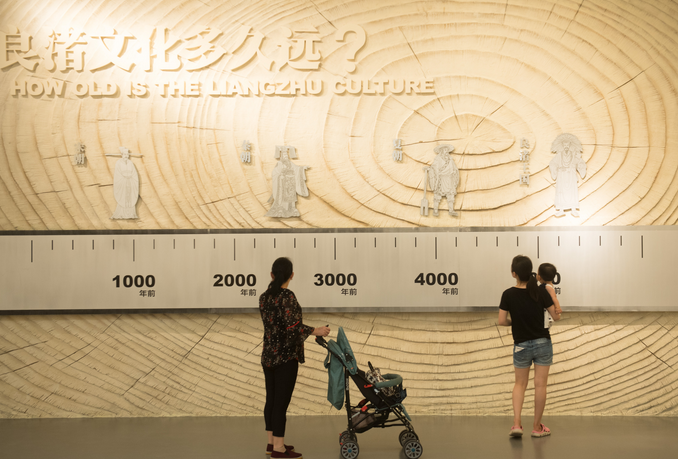BEIJING, July 10 (Xinhua) -- As a heritage newly inscribed onto the UNESCO World Heritage List in 2019, the Archaeological Ruins of Liangzhu City located in Hangzhou, China's Zhejiang Province, has actively explored the innovative development mode and taken measures to ensure the sustainable preservation and inheritance of the heritage in recent years.
The Liangzhu ruins with a total heritage and buffer zone area of 114 square kilometers in the north of Hangzhou, is considered an important representation of early urban civilization. While, the large scope of the site with so many remaining elements has made the heritage preservation and relevant constructions become difficult.
Liangzhu has created a hierarchical and complementary industrial ecosystem and promoted the coordinated interaction between heritage protection and economic development. Especially in the heritage area, based on the existing natural ecology, Liangzhu has developed industrial formats that can highlight the characteristics and cultural elements of the site.
Over the past years, 31 quarries near the Liangzhu ruins have been closed, a route of a national highway has been changed, and traditional agriculture and emerging industries including sightseeing agriculture have been introduced, to protect the surrounding environment of the ruins.
It is learned that the revision of the ruins' protection general plan has entered the planning stage since last November. The revision is a sustainable development plan of the heritage sites, said Wang Hui, director with planning and construction bureau of the ruins' administration commission.
The Liangzhu ruins has adopted a monitoring system and launched 40 large screens, showing 175 kinds of data of the ruins in the areas of diseases, natural environment, etc. Besides, data from the joint inspection of remote sensing satellites, unmanned aerial vehicles, ground professional front-end equipment and manual apps implements all-weather detection of 114 square kilometers of the area.
After becoming a new world heritage, the popularity of the Archaeological Ruins of Liangzhu City increases day by day. In response to audience feedback on the lack of visualization of park exhibition items, the heritage park is currently accelerating the implementation of the second phase of on-site display and exhibition display projects.
As an important witness of the five-thousand-year Chinese civilization, the Archaeological Ruins of Liangzhu City in Hangzhou, which date back 5,300 years, were inscribed onto the UNESCO World Heritage List on July 9, 2019, during the 43rd session of the World Heritage Committee in Baku, Azerbaijan. (Edited by Gao Jingyan with Xinhua Silk Road, gaojingyan@xinhua.org)




 A single purchase
A single purchase









